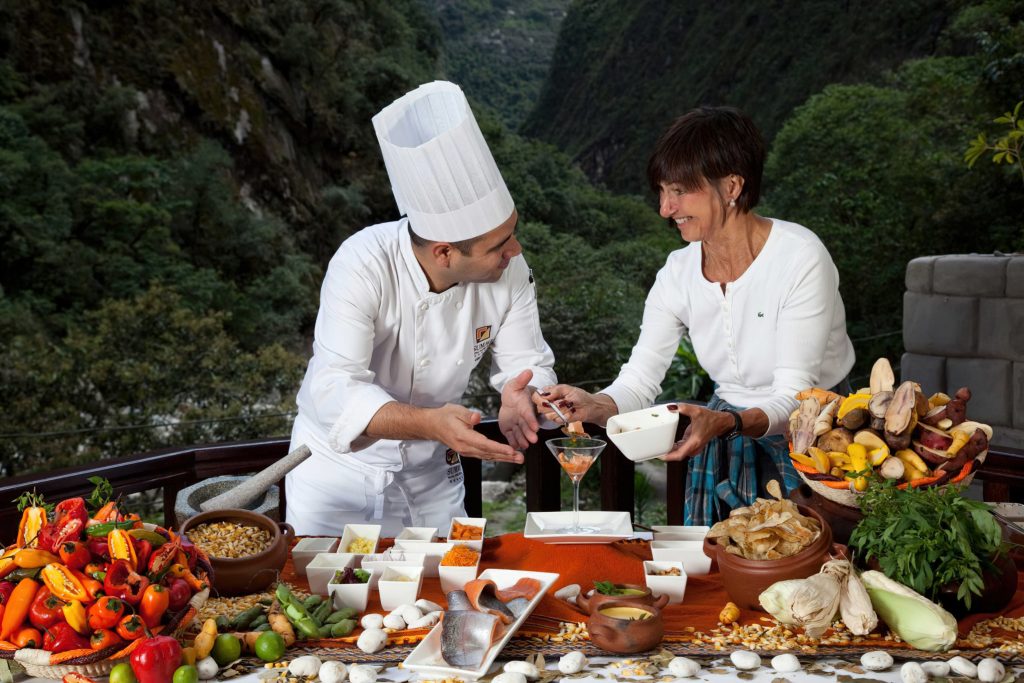The Andes, a vast mountain range, hides secrets of an ancient empire. Among these secrets are tantalizing tastes and culinary techniques passed down generations. Let’s embark on this flavorful journey and uncover the Inca Empire’s edible heritage.
Inca Staples: More than Just Food
The Incas, like all great civilizations, had a profound relationship with their land. Corn, revered as the “Gold of the Andes”, wasn’t just a crop; it symbolized life itself. Potatoes, in their myriad varieties, were more than sustenance. They were an ingenious answer to the region’s challenging topography and climate. Techniques like freeze-drying were developed, giving birth to chuño, a potato product that lasts for years.
Equally significant was the role of quinoa. Not merely a trendy superfood today, quinoa held religious and cultural importance for the Incas. It was the “Mother Grain”, offering nourishment to both the body and spirit.
Beverages and Festivities: A Symbolic Connection
Celebrations also brought forth a bounty of dishes that showcased the empire’s culinary diversity. From zesty ceviches crafted from freshly caught fish to the aromatic spices that adorned their stews, the Incan table was a testament to their culinary prowess and innovative spirit.
From Ancient Times to Modern Kitchens
Centuries have passed, yet the culinary imprint of the Incas remains strong. Today, world-renowned chefs fuse traditional Incan ingredients with contemporary techniques, creating dishes that resonate with history and innovation. Peruvian restaurants, from Lima to London, serve these ancient flavors with a modern twist, introducing a new generation to the timeless tastes of the Andes.
The Inca Empire may have faded into the annals of history, but its culinary heritage is a living testament to its greatness. From the high-altitude farms of the Andes to the bustling urban eateries, the flavors of the Incas continue to enchant, nourish, and inspire.
Harvest and Preparation: The Inca Way
Every harvest was a community event in the Incan society. They adhered to a communal farming system called “ayni,” wherein neighbors would help each other in farming tasks. This mutual support system ensured everyone had food on their table and strengthened community ties.
The Incas had a rich array of tools and techniques. They crafted terraces on the mountain slopes, called “andenes”, allowing agriculture to flourish in otherwise challenging terrains. Irrigation canals, built with precision, ensured efficient water distribution. Post-harvest, food was stored in colcas (storehouses) to safeguard against lean periods.
Cooking was both a daily ritual and a form of art. The “pachamanca” was a traditional method where food was cooked underground using heated stones. This slow-cooking technique infused dishes with a unique smoky flavor and was reserved for special occasions.
Influence on Global Cuisine
The Andes and the Inca Empire gifted the world ingredients that are now staples globally. Can you imagine Italian cuisine without tomatoes, or Hungarian goulash without paprika? Both originated in South America. The same goes for potatoes, which have been adapted in myriad forms across continents.
Furthermore, the idea of sustainable farming and communal support finds resonance today as the world grapples with climate change and food security. The Incas, with their intricate understanding of their environment, serve as a beacon for sustainable agricultural practices.
In the grand tapestry of world cuisine, the Inca Empire’s contributions are undeniable. As we explore flavors, techniques, and traditions, we realize that their legacy isn’t just about food. It’s a narrative of harmony with nature, community spirit, and the ceaseless human endeavor to create, innovate, and celebrate.

